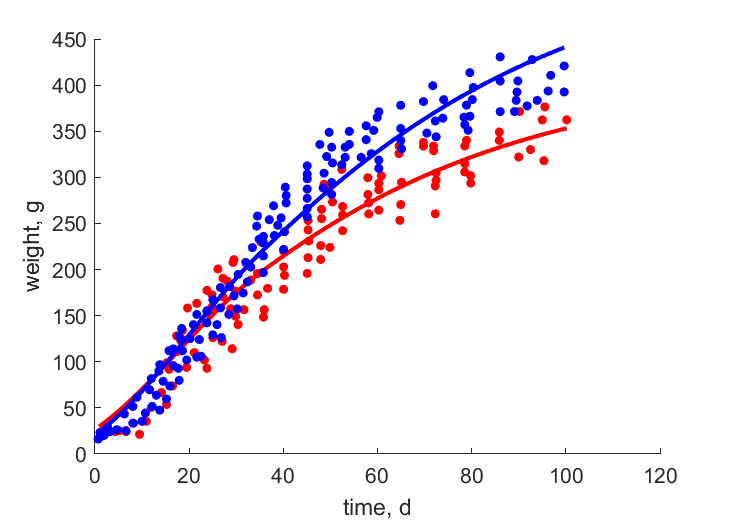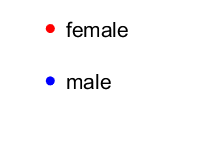Predictions & Data for this entry
| Model: std | climate: BSk, BWk, Csa | migrate: Ms | phylum: |
| COMPLETE = 2.5 | ecozone: THp, TPi | food: bxCi, xiHs | class: |
| MRE = 0.039 | habitat: 0iTa, 0iTd | gender: Dg | order: |
| SMSE = 0.004 | embryo: Tnsfm | reprod: O | family: |
Zero-variate data
| Data | Observed | Predicted | (RE) | Unit | Description | Reference |
|---|---|---|---|---|---|---|
| ab | 21.5 | 21.56 | (0.002663) | d | age at birth | Harr1975 |
| tx | 30 | 29.75 | (0.008411) | d | time since birth at fledging | AourZnar2016 |
| tp | 90 | 101.9 | (0.1321) | d | time since birth at puberty | guess |
| tR | 365 | 365 | ( 0) | d | time since birth at 1st brood | AourZnar2016 |
| am | 9125 | 9415 | (0.03179) | d | life span | guess |
| Wwb | 19.1 | 19.39 | (0.01519) | g | wet weight at birth | AourZnar2016 |
| Wwi | 355 | 317.8 | (0.1048) | g | ultimate wet weight for females | AourZnar2016 |
| Wwim | 420 | 418 | (0.004731) | g | ultimate wet weight for males | AourZnar2016 |
| Ri | 0.006849 | 0.007234 | (0.05618) | #/d | maximum reprod rate | Harr1975 |
Uni- and bivariate data
| Data | Figure | Independent variable | Dependent variable | (RE) | Reference |
|---|---|---|---|---|---|
| tW_f |   | time | weight | (0.1079) | AourZnar2016 |
| tW_m |   | time | weight | (0.08777) | AourZnar2016 |
Pseudo-data at Tref = 20°C
| Data | Generalised animal | Pterocles orientalis | Unit | Description |
|---|---|---|---|---|
| v | 0.02 | 0.03234 | cm/d | energy conductance |
| p_M | 18 | 528.5 | J/d.cm^3 | vol-spec som maint |
| k_J | 0.002 | 0.02164 | 1/d | maturity maint rate coefficient |
| k | 0.3 | 0.2999 | - | maintenance ratio |
| kap | 0.8 | 0.9482 | - | allocation fraction to soma |
| kap_G | 0.8 | 0.7999 | - | growth efficiency |
| kap_R | 0.95 | 0.95 | - | reproduction efficiency |
Discussion
- Feeding is reduced towards end of nestling period
- Males are assumed to differ from females by {p_Am} only
- mod_1: males have equal state variables at b, compared to females
- mod_2: Pseudo-data point k is used, rather than k_J; Data set tp and parameter t_R are added, the latter replacing clutch interval t_N. Postnatal T is based on PrinPres1991, see get_T_Aves. See further the revision page, theme puberty
Bibliography